Crab cakes are a beloved seafood delicacy, celebrated for their flavorful richness and versatility in recipes. While many may assume that crafting the perfect crab cake requires intricate techniques or expensive ingredients, the truth is that even novice cooks can achieve restaurant-quality results with easy crab cakes recipes. Whether you’re a seafood enthusiast or a kitchen newbie, this article dives into the secrets behind creating mouthwateringly delicious crab cakes, exploring everything from simple crab cake ingredients to quick cooking methods. Discover how to elevate your crab cakes with canned crab or other creative twists, ensuring a perfectly balanced flavor profile every time. From no-mayo options to bread crumb coatings, we’ve got you covered with expert tips and easy crab cakes recipes that will impress both family and friends. Don’t miss out on these game-changing ideas for bringing crab cakes to your table effortlessly and enjoyably.
Key Takeaways
– Chill the mixture: Ensure your crab cake mixture is properly chilled to achieve a firm texture and prevent spreading during cooking.
– Avoid overworking the mixture: Mix ingredients gently to avoid introducing excess air, which can lead to a dense texture.
– Use sufficient binders: Incorporate binders like egg or mayonnaise to keep the mixture cohesive and prevent the cakes from falling apart.
– Balance seasoning: Season carefully to enhance flavor without overwhelming the delicate crab taste.
– Control cooking temperatures: Cook at medium heat to avoid burning and ensure even cooking.
– Use parchment paper: Prevent sticking and make shaping easier by lining pans with parchment.
– Incorporate baking powder: Achieve a light and fluffy texture by adding baking powder, enhancing both taste and mouthfeel.
– Choose the right cooking method: Bake for a firmer texture or pan-fry for a softer result.
– Store properly: Keep leftover crab cakes in an airtight container for up to 3 days to maintain freshness and texture.
For more expert tips and a detailed guide to perfecting your crab cake recipe, check out our comprehensive crab cake guide.
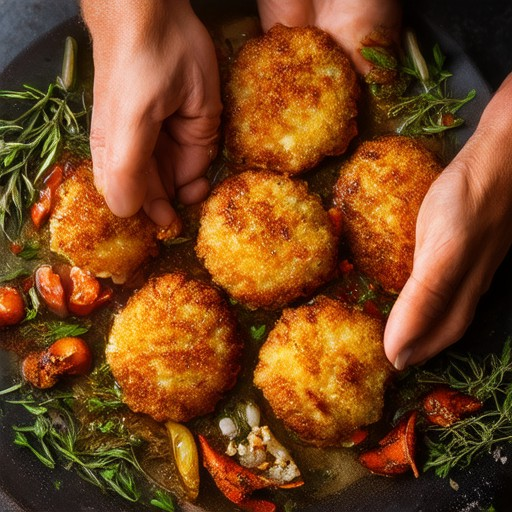
The Secret to the Best Crab Cake
To make the perfect crab cake, follow these essential steps:
- Prepare the Crab Meat : Start by draining the crab meat thoroughly using a strainer lined with paper towels. Press firmly to remove excess moisture, which prevents the cakes from becoming mushy.
- Create the Batter : In a large bowl, combine the drained crab meat, breadcrumbs (or Ritz crackers for added crunch), beaten eggs (usually 2), mayonnaise (for richness), and a tablespoon of Old Bay seasoning. Add green onions or bell peppers for extra flavor if desired.
- Shape the Cakes : Form the mixture into small patties using a cookie cutter or flatten them slightly for a pancake-like texture. This ensures consistent sizing and even cooking.
- Cook the Cakes :
- Pan-Fry : Heat oil in a skillet over medium-high heat. Cook each cake for 3-4 minutes per side until golden brown.
- Bake : Place cakes on a parchment-lined baking sheet and bake at 375°F for 15-20 minutes until golden.
- Grill : Grill for 4-5 minutes on each side until cooked through.
- Serve with Dipping Sauce : Serve warm with tartar sauce, aioli, or a remoulade sauce. Garnish with lemon wedges and parsley for a visually appealing finish.
- Store Leftovers : Refrigerate unused crab cakes for up to 3 days or freeze for later use, though they are best fresh.
By mastering these techniques, you’ll achieve tender, flavorful crab cakes every time. Experiment with different seasonings and cooking methods to find your personal favorite.
What Are the Ingredients in a Crab Cake?
The ingredients in a classic crab cake typically include:
- Crab meat: Usually lump or flake crab, depending on the recipe.
- Mayonnaise: Often used as a binder and for creaminess.
- Eggs: Added to bind the mixture and enhance texture.
- Old Bay Seasoning: A common spice blend for crab dishes.
- Mustard: Typically prepared with Dijon mustard for flavor.
- Mayo-Mustard Blend: Combined for a creamy base.
- Celery: Chopped for texture and additional flavor.
- Onion: Finely minced for a subtle sweetness.
- Garlic: Optional, but adds depth to the dish.
- Bread crumbs: Used to thicken the mixture.
- Lemon juice: For brightness and acidity.
- Worcestershire sauce: Adds complexity to the flavor profile.
- Hot sauce or Tabasco: Optional, for a spicy kick.
- Green onions: Chopped for color and freshness.
For the best crab cakes, many recipes suggest using fresh crab meat and fine bread crumbs. Some variations may include herbs like parsley or chives for garnish. The exact measurements can vary depending on the desired texture and taste preferences.
Pro Tip: To make your crab cakes extra crispy, try adding a bit of oil to the baking pan or shallow frying them briefly before baking. This ensures a golden brown exterior and prevents them from being too dense.
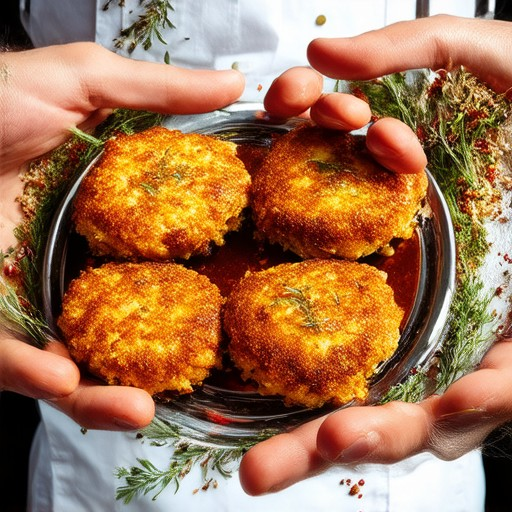
Can I Use Canned Crab for Crab Cakes?
Yes, you can use canned crab for crab cakes. Canned crab is a perfectly acceptable substitute for fresh crab and works well in most recipes. Here’s how you can effectively use canned crab:
- Ingredients : Replace fresh crab meat with canned crab meat in your recipe. Drain the canned crab thoroughly to remove excess liquid.
- Texture and Flavor : While fresh crab has a flaky texture, canned crab tends to be more tender and smooth. However, this subtle difference in texture is often masked by other ingredients like breadcrumbs and seasonings.
- Preparation : Follow the standard crab cake recipe instructions, adjusting for the texture of the canned crab if necessary. Form the mixture into patties and cook as usual.
- Affordability : Canned crab is generally more affordable than fresh crab, making it a budget-friendly choice for crab cake enthusiasts.
- Alternatives : If you prefer the texture of fresh crab, consider using frozen crab meat as another alternative.
Remember to choose high-quality canned crab to ensure the best taste and texture for your crab cakes. Enjoy experimenting with different types of crab meat!
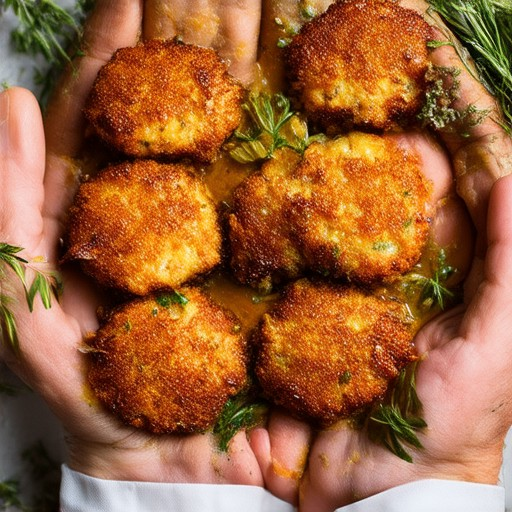
Common Mistakes People Make When Making Crab Cakes
Crab cakes are a delicious and rewarding dish to prepare, but many home cooks encounter common pitfalls that can lead to less-than-perfect results. Here are some mistakes to watch out for:
- Mistake 1: Not Chilling the Mixture Crab cake mixtures often require chilling to firm up before baking. Without proper chilling, the mixture may become too loose and spread out during cooking, resulting in thin, uneven cakes. Chill the mixture for at least 2 hours, preferably overnight.
- Mistake 2: Overworking the Mix Overmixing the crab mixture can incorporate too much air, leading to dense and rubbery texture. Mix until just combined, taking care not to overwork the ingredients.
- Mistake 3: Using Too Little Binder A binding agent like egg, mayonnaise, or breadcrumbs is crucial for holding the crab mixture together. Without enough binder, the cakes will fall apart during cooking. Ensure your recipe includes sufficient amounts of these ingredients.
- Mistake 4: Seasoning Incorrectly Seasoning is key, but too much salt or spice can overpower the delicate flavor of crab. Balance is essential—start with a pinch and adjust to taste, then fold into the mixture.
- Mistake 5: Cooking Temperature Issues Cooking crab cakes at too high a temperature can cause them to brown too quickly and remain doughy inside. Aim for medium heat and monitor carefully to avoid burning.
- Mistake 6: Not Using Parchment Paper When shaping crab cakes, placing them on parchment paper helps prevent sticking and makes flipping easier. Avoid using wet hands, as they can cause the mixture to tear.
For the best crab cake recipe and tips, visit our comprehensive crab cake guide . Perfect your technique and enjoy homemade crab cakes like a pro!
How to Keep Crab Cakes from Falling Apart
Crab cakes can sometimes fall apart due to improper handling or preparation. Here are some effective tips to keep them intact:
- Chill the Mixture: Refrigerate the crab cake mixture for at least 30 minutes before shaping. This allows the proteins in the crab to firm up, making the mixture easier to handle and less likely to fall apart.
- Add Binders: Incorporate binders like egg or mayonnaise to help the mixture hold together. These ingredients act as stabilizers, preventing the crab cakes from becoming too crumbly.
- Shape Properly: When shaping the crab cakes, press them firmly against the bottom of the pan or use a mold to ensure they hold their shape. Avoid pressing too hard, as this can cause them to become dense and tough.
- Cook Gently: Cook the crab cakes in a non-stick skillet over medium heat. Use a spatula to carefully flip them, avoiding excessive force that could cause them to break apart.
- Consider Your Cooking Method: While pan-frying gives a softer texture, baking can dry them out more. For firmer cakes, bake at 375°F (190°C) until golden brown, about 15-20 minutes. Let them cool slightly before serving to set further.
By following these tips, you can enjoy perfectly formed crab cakes every time, whether you’re frying, baking, or grilling them. Remember to store leftover crab cakes in an airtight container in the fridge for up to 3 days to maintain their texture and flavor.
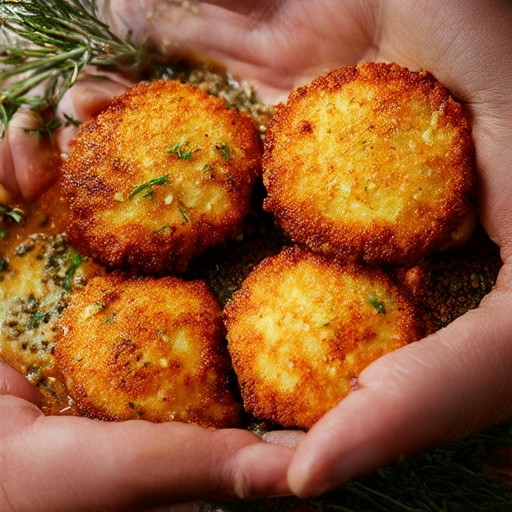
Why Put Baking Powder in Crab Cakes?
Baking powder is commonly added to crab cakes to achieve a lighter and fluffier texture. As a leavening agent, it introduces air bubbles into the mixture, preventing the crab cakes from becoming dense or tough. This enhances the overall mouthfeel and eating experience.
The interaction between baking powder and acidic ingredients like lemon juice or vinegar can also contribute to a subtle tanginess, complementing the natural flavor of crab meat. This balance of texture and taste makes baked crab cakes more enjoyable.
Additionally, baking powder is a convenient leavening option for home cooks, requiring no advance preparation like chilling dough or separating eggs. Its widespread availability and ease of use make it a popular choice for crab cake recipes.
For optimal results, the typical ratio of baking powder to flour in crab cake recipes is about 1 teaspoon per cup of flour. This amount ensures a gentle rise without overpowering the dish with a bitter aftertaste.
By incorporating baking powder, chefs can elevate the simplicity of crab cakes, offering a refined dining experience that balances flavor and texture seamlessly.

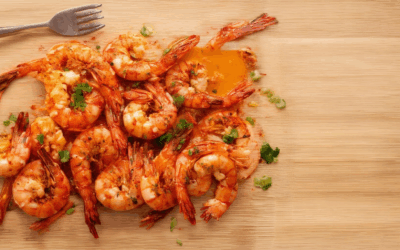
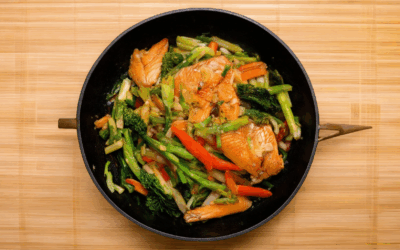
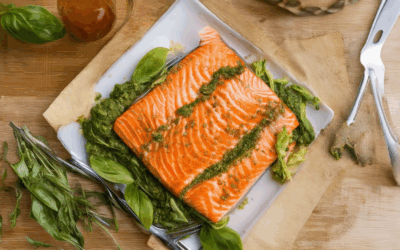
0 Comments